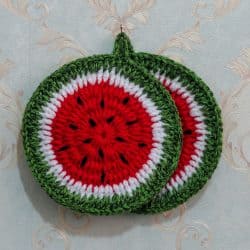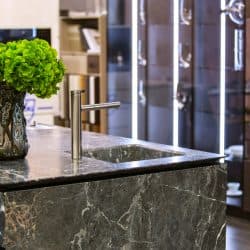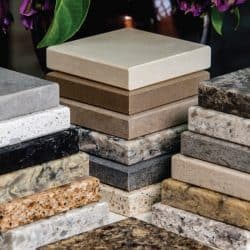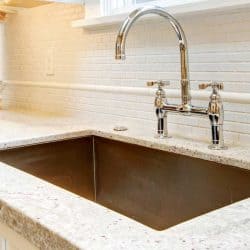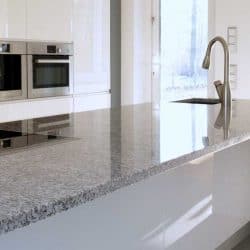Designing or renovating a new kitchen or bathroom space often involves gorgeous granite countertops. But there are so many options for granite, including which type of edge to choose. So how do you select your granite countertop edge? What are the considerations? We've explored and researched the best available options and compiled them for you here.
Different types of granite countertop edges include:
- Eased (or Square) and Quarter Round
- Half Bullnose, Demi Bullnose, Full Bullnose
- 1/4" Bevel, 1/2" Bevel, Double Bezel
- Flat Ogee, Ogee, Ogee Bull
- Cove, Cove Ogee, Cove Dupont
- Dupont
- Waterfall
- Hollywood Bevel
Let's take a look at each of these, discuss the pros and cons, and look at general price ranges for the types of edges. We'll also look at which are standard and which are custom. If you're wondering whether you can change the edge after installation, please keep reading because we've answered that too.
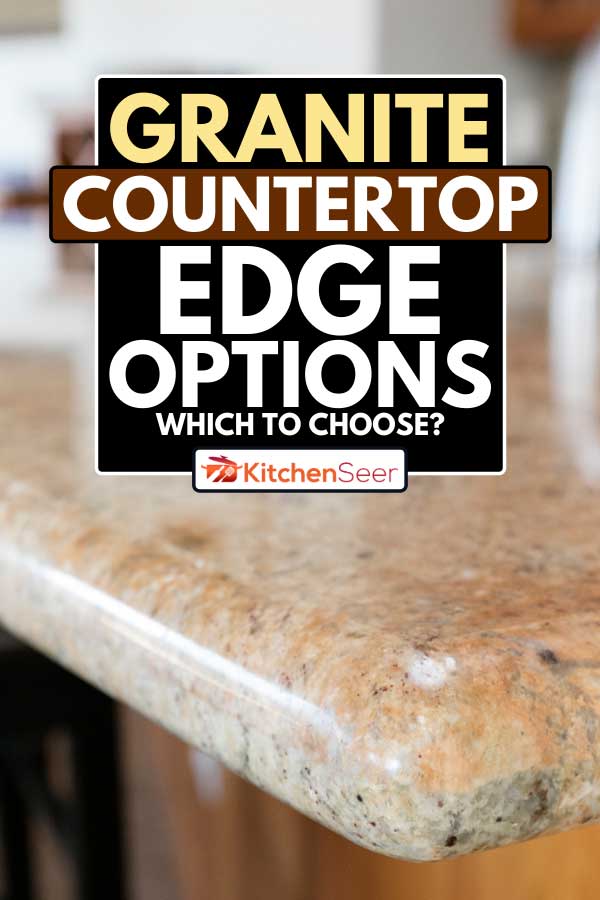
Different Types Of Granite Countertop Edges
There are several different types of granite countertop edges. The image above shows many edges in the side-profile to demonstrate how the granite looks after being cut.
Eased (Or Square) and Quarter Round Granite Edges
Each of these types is slightly different, but they all involve a slight rounding of the edges at either the top and bottom or just top. The eased or square edge has the slightest turn to the top and bottom edge, which gives it a smoother feeling on the hand compared to the raw straight edge of fresh-cut granite. It is elegant and straightforward, but it might be too modern for some decors.
The quarter round edge has a more sloped rounding on the top edge, but the bottom remains straight. This is a very traditional and simple look. The bottom edge may feel a bit sharp to the hand. All three of these types of edges, eased or square, quarter round, and raw straight edge, are standard edges, and whichever of these three you choose is included in the overall fabrication price.
Bullnose Edges: Half, Demi, And Full
Bullnose edges start farther back on the granite than the rounded edges do. Think of a part of an actual circle. The countertop pictured above is a full bullnose countertop where the edge is essentially a full half-circle that meets the flat part of the stone.
Demi bullnose edges feature a quarter-circle that extends from the top of the countertop down over the side. This is a nice, transitional look that can work for both modern and classic kitchens. Half bullnose has slightly less of a curve than a demi bullnose. Of these bullnose edges, both demi and half are a standard edge included in the cost of your countertop. Full bullnose edges will be an upgrade price-wise.
Bevel Edges
Bevel edged countertops come in either a quarter or half bevel. The bevel is an angular cut that takes off the triangular tip of the square edge. This look is geometric yet classic and works well in both modern and traditional designs. The half bevel is a more extended angle from the flat surface to the edge. Both of these cuts are standard with most installations.
Slightly more expensive is a double beveled edge. This cut flattens the edge of the square at both the upper edge and the lower edge. The advantage of this is something much more comfortable on the hand and less prone to chipping.
Flat Ogee, Ogee, And Ogee Bull Edges
The ogee edges involve stepping down the solid surface of the granite and then leaving a protrusion for the lower half of the edge. This tiered edge has a framing effect for the corner of your granite. Some cooks don't like ogee edges in their kitchen because they are not as easy to clean as a square or bull nose edge. All of the ogee edges will include an upcharge when you order your granite because they involve more detailed cutting.
Cove, Cove Ogee, And Cove Dupont Edges
All of the cove edges involve a crescent curve that scoops inward on your edge. The cove ogee and cove Dupont involve double-tiered crescent curves. These are somewhat ornate edges that will look better in traditional or transitional homes than in contemporary homes. They are all considered upgrades and will cost more than standard edge cuts.
Dupont Edge
The Dupont Edge is a double-tiered cut that involves a straight drop into a bull nose rounding of the bottom part of the granite edge. This edge is a common choice for use with marble as it gives a bit of tailored structure while the rounded curve feels pleasing to the hand. Dupont edging is an upcharge when it comes to manufacturing.
Waterfall Edge
The waterfall edge is a triple-tiered granite edge that features three convex arcs. This cut adds a lot of detail and interest to your counter's edge. This style tends to be popular in more ornate homes. Because it is a complex cut, the waterfall edge tends to be one of the more expensive choices you can make.
Hollywood Bevel
The Hollywood bevel takes the bevel edge to extremes. The bevel drops from the surface down to the bottom edge of your counter's edge. It's a super contemporary look for modern kitchens. It is more expensive than some of the other edge choices we've provided for you.
How To Choose The Best Countertop Edge For Your Counter
The first thing you should consider when choosing your countertop edges is your budget. If your budget is limited, then stick with a standard cut. Your granite will be beautiful no matter which edge it has and choosing gorgeous stone matters more than the edge. If you have no limits and want to focus on all the details, then maybe consider one of the more premium edges to set your kitchen or bathroom apart.
Your home's interior style is another consideration in your choice. If you're into a modern look, think straight-lined or angular. For traditional or transitional homes, you may want a tiered granite edge that matches other details in your kitchen or bath.
What Is The Standard Edge For Granite?
A standard edge for granite is one that is included in the cost of manufacturing. Most granite companies will offer several different styles as standard. Some of these include eased, quarter round, demi bullnose, and quarter bevel. Check with your granite source to find out which cuts they offer as standard with your countertop.
How Do You Round The Edges Of Granite Countertop?
You can round the edges of your granite countertop using a grinder meant for use on stone. You'll have to keep the stone wet as you work. Once you have your square edge rounded over, you'll need to polish it using sanding pads. Here's a wonderful short video that shows the process:
A Granite Wet Polishing Kit like this one comes with all the tools you need for sanding and polishing your granite. Click here for this tool on Amazon.
Can Granite Edge Be Changed After Installation?
It is possible to change your granite edge after installation but not without expense and mess. The same tools used to cut initially at the shop are used to cut your granite on-site. Also, it will be much easier to turn a square countertop into a rounded countertop than vice versa. Much depends on what you already have and how you intend to change it.
What Is The Most Popular Edge For Granite Countertops?
It seems as though the eased or square edge is the most popular for granite countertops. As it's standard for most companies, there's no extra cost. It also works well with all decors and keeps the choice simple. Of the higher cost tiered edges, probably the Ogee style is the most popular. It's typically used in traditional or Spanish style homes.
Final Thoughts
As you can see, edge selection for granite countertops is primarily personal preference. You'll of course want to work within your budget to choose an edge that coordinates with your home's style. No matter which edge you prefer, installing granite countertops is a long-lasting, beautiful addition to any home.

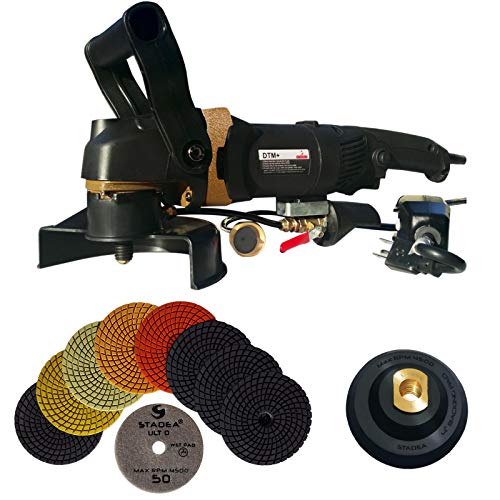
![An empty kitchen with a granite island countertop with wooden flooring, How To Clean Granite Countertops? [3 Steps]](https://kitchenseer.com/wp-content/uploads/2020/10/An-empty-kitchen-with-a-granite-island-countertop-with-wooden-flooring-250x250.jpg)
